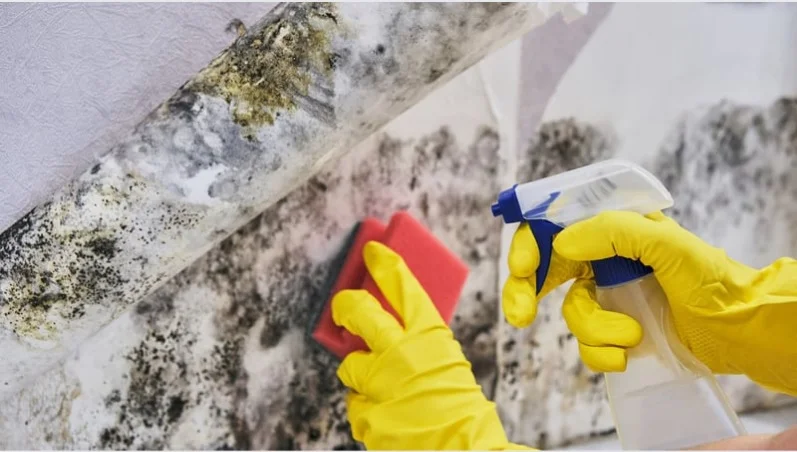Mold is a common yet often overlooked problem in homes and buildings. It can thrive in damp, dark environments and quickly spread, posing serious health risks. Mold toxicity occurs when individuals are exposed to large quantities of mold spores and mycotoxins over a period, leading to various health issues. Understanding the warning signs of mold toxicity is crucial for maintaining a healthy living environment. This blog post will discuss 10 warning signs of mold toxicity you shouldn’t ignore and how early identification can lead to a healthier home and lifestyle.
1. Respiratory Issues
One of the most common signs of mold toxicity is respiratory problems. Mold spores can irritate the respiratory system, leading to symptoms such as coughing, wheezing, shortness of breath, and a sore throat. Individuals with asthma or other preexisting respiratory conditions may experience worsened symptoms. Persistent respiratory issues without a clear cause could indicate mold exposure, especially if symptoms improve when you leave the affected environment.
2. Chronic Fatigue
Feeling constantly tired despite getting adequate rest is another warning sign of mold toxicity. Chronic fatigue can result from the body’s ongoing fight against the toxins produced by mold. This persistent tiredness can interfere with daily activities and reduce overall quality of life. If you notice unexplained fatigue that does not improve with sleep or rest, mold exposure could be a contributing factor.
3. Skin Irritation
Exposure to mold can also cause skin issues, including rashes, itching, and hives. Mold spores can come into contact with the skin through the air or direct contact with contaminated surfaces. These skin reactions can be particularly bothersome and may persist as long as exposure continues. If you develop unexplained skin irritation that doesn’t respond to typical treatments, consider the possibility of mold in your environment.
4. Sinus and Nasal Problems
Mold exposure often leads to sinus congestion, nasal irritation, and frequent sneezing. These symptoms can mimic those of a common cold or allergies but tend to persist or recur frequently. Mold spores can inflame the mucous membranes in the nose and sinuses, causing discomfort and contributing to chronic sinusitis. If sinus problems are a constant issue, mold could be the culprit.
5. Headaches and Migraines
Frequent headaches or migraines can be another sign of mold toxicity. The mycotoxins produced by mold can affect the nervous system, leading to headaches that range from mild to severe. These headaches can be persistent and debilitating, impacting daily life and productivity. If you experience regular headaches without an identifiable cause, it’s worth investigating your environment for mold.
6. Cognitive Issues
Mold toxicity can also affect mental health and cognitive function. Symptoms may include difficulty concentrating, memory problems, brain fog, and confusion. These cognitive issues can be particularly concerning and may interfere with work or daily activities. Mold-related cognitive problems often improve when the affected person leaves the moldy environment, highlighting the importance of identifying and addressing mold exposure.

7. Digestive Problems
Exposure to mold can lead to gastrointestinal issues such as nausea, diarrhea, abdominal pain, and bloating. These symptoms occur because mycotoxins can affect the digestive system, leading to inflammation and irritation. If you experience persistent digestive problems without a clear cause, consider the possibility of mold toxicity, especially if other symptoms are present.
8. Mood Swings and Anxiety
Mold exposure can impact mental health, leading to mood swings, anxiety, and depression. The toxins produced by mold can affect neurotransmitter function, leading to changes in mood and behavior. These psychological symptoms can be distressing and may be mistaken for other mental health conditions. If mood changes occur alongside other symptoms of mold toxicity, it’s important to consider environmental factors as a potential cause.
9. Muscle and Joint Pain
Unexplained muscle and joint pain can also be a sign of mold toxicity. Mycotoxins can cause inflammation in the body, leading to aches and pains in muscles and joints. This pain can be persistent and may not respond to typical treatments. If you experience ongoing muscle or joint pain without an obvious cause, mold exposure should be considered as a potential factor.
10. Immune System Suppression
Mold toxicity can suppress the immune system, making individuals more susceptible to infections and illnesses. This can result in frequent colds, flu, and other infections that take longer to recover from. A weakened immune system can also exacerbate other symptoms of mold toxicity, creating a cycle of poor health. If you find yourself frequently sick or with prolonged recovery times, mold exposure may be impacting your immune system.
Importance of Early Identification and Prevention
Recognizing the warning signs of mold toxicity is crucial for preventing prolonged exposure and its associated health risks. Mold can affect multiple systems in the body simultaneously, making it a multi-symptom disease that is difficult to diagnose. Since mold toxicity affects everyone differently, the combination of symptoms will vary from person to person. However, early identification of these signs can lead to timely intervention and a healthier living environment.
Steps to Address Mold Toxicity
- Inspect and Identify: Regularly inspect your home or workplace for signs of mold growth, especially in damp or poorly ventilated areas.
- Professional Testing: If you suspect mold toxicity, consider professional mold testing to confirm its presence and identify the type of mold.
- Remediation: Hire a professional mold remediation service to safely remove mold and prevent future growth.
- Improve Ventilation: Ensure proper ventilation in your home, especially in bathrooms, kitchens, and basements, to reduce moisture buildup.
- Use Dehumidifiers: Use dehumidifiers in areas prone to dampness to maintain low humidity levels.
- Address Leaks: Repair any leaks in roofs, walls, or plumbing to prevent moisture accumulation.
- Regular Cleaning: Regularly clean and disinfect areas prone to mold growth, such as bathrooms and kitchens.
Conclusion
Mold toxicity is a serious issue that can have wide-ranging health implications. By understanding and recognizing the warning signs, you can take proactive steps to address mold issues and protect your health. Early identification and prompt action are key to maintaining a healthy living environment and preventing the adverse effects of mold toxicity. If you suspect mold exposure, don’t ignore the symptoms—seek professional help to ensure a thorough and effective resolution.









